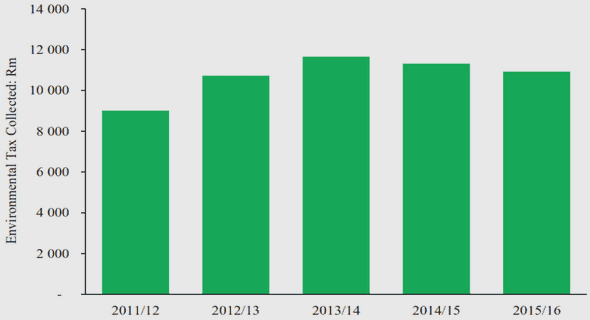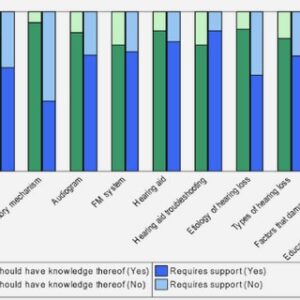(Downloads - 0)
For more info about our services contact : help@bestpfe.com
Table of contents
1. General Introduction
1.1 Part I – Introduction to Macroalgae
1.1.1 Macroalgae
1.1.2 History and Classification
1.1.3 Ecology
1.1.4 Valorization of Macroalgae
1.1.5 Macroalgae in Mexico
1.2 Part – II– Red Macroalgae
1.2.1 Introduction
1.2.2 Biology of Red Macroalgae
i. Cell wall
ii. Polysaccharides: Structural and Storage
a. Carrageenans
b. Agar
c. Starch
iii. Pigments and Proteins
iv. Lipids
1.2.3 Species under Study – Halymenia floresii
1.3 Part – III- Abiotic and Biotic parameters
1.3.1 Introduction
1.3.2 Definition and Types – Abiotic parameters
i. Hydrodynamism
ii. Nutrients
iii. Desiccation
iv. Temperature
v. Light
vi. Salinity
1.3.3 Definition and Types of Biotic parameters
i. Herbivory
ii. Biofilm
iii. Epiphytism
1.4 Part – IV – Influence of the stressors (abiotic and biotic parameters) Defence on surface of Rhodophyta Halymenia floresii: metabolomic profile and interactions with its surface-associated bacteria Shareen Arockiasamy 2020
1.4.1 Introduction
1.4.2 Chemical Defence
i. Oxidative bursts
ii. Halogenation of volatile and non-volatile compounds
iii. Distance signaling
1.4.3 Microbial Defence
1.5 Part – V – Consequence of Holobiont break-up – Macroalgal Disease
1.5.1 Introduction
1.5.2 Definition
1.5.3 Algal diseases
1.5.4 Nature of pathogens
1.5.5 Mechanisms of action of pathogen
1.5.6 Impact of disease on the aquaculture sector
1.6 Context and Aims of the Thesis
2. Chapter I – Defence on Surface: Macroalgae and their associated-microbiome
2.1 Abstract
2.2 Introduction
2.3 Seaweed surface-microbe interactions – biofilm development
2.3.1 Seaweed Surface: as a substratum
i. Cell wall structure
ii. Surface topographical features
2.4 Macroalgae defence
2.4.1 Removal of surface layers
2.4.2 Production of Reactive Oxygen Species
2.4.3 Antimicrobial compounds
2.5 Microbiome on the surface
2.5.1 Bacteria
2.5.2 Fungi
2.5.3 Microalgae
2.5.4 Virus
2.6 Role of Microbiome: Microbial Interactions and their Hosts Response
2.6.1 Quorum Sensing
2.6.2 Quorum Quenching
2.6.3 Positive Effects: Symbiotism Defence on surface of Rhodophyta Halymenia floresii: metabolomic profile and interactions with its surface-associated bacteria Shareen Arockiasamy 2020
2.6.4 Negative Effects: Pathogenism
i. Spatial effects
ii. Temporal Effects
2.7 Future Perspectives
2.8 References
3. Chapter II – Screening of surface-associated bacteria from the Mexican red alga Halymenia floresii for Quorum Sensing activity
3.1 Abstract
3.2 Introduction
3.3 Materials and methods
3.3.1 Algal material
3.3.2 Isolation of surface-associated bacterial strains
3.3.3 Characterization of selected bacterial strains
i. Morphological and biochemical characterization
ii. Molecular characterization
iii. Phylogenetic analyses
3.4 Screening of the selected bacterial for QS signals – Reporter assay
3.4.1 Reporter strains
3.4.2 Cross-feeding assay
3.4.3 Bioluminescent assay
3.5 Statistical analysis
3.6 Results
3.6.1 Isolation and identification of surface-associated bacteria
i. Morphological and biochemical characterization
ii. Molecular characterization
a. Alphaproteobacteria
b. Gammaproteobacteria
c. Bacteroidetes
d. Firmicutes
3.6.2 Detection and screening of QS signal production
3.7 Discussion
3.7.1 Isolation and identification of selected surface-associated bacteria of H. floresii
3.7.2 Detection and screening of QS signals
i. Cross-feeding assay
ii. Bioluminescence assay
Defence on surface of Rhodophyta Halymenia floresii: metabolomic profile and interactions with its surface-associated bacteria Shareen Arockiasamy 2020
3.8 Conclusions
3.9 Future perspectives
3.10 Acknowledgements
3.11 References
4. Chapter III – Chemical defense against microfouling by allelopathic active metabolites of Halymenia floresii (Rhodophyta)
4.1 Abstract
4.2 Introduction
4.3 Materials & Methods
4.3.1 Algal material
4.3.2 Optimization of Selective Extraction of surface-associated metabolites
i. Surface-associated metabolites (DIP) extraction – Determination of Immersion solvent and Immersion period
ii. Whole-Cell Metabolites (WCM) extraction
4.3.3 Quorum Quenching activity by Bioluminescent reporter assay
i. Bacterial strains – Isolation from the surface of H. floresii
ii. Identification – Taxonomic affiliation of the surface-associated bacteria
iii. Bioluminescence – Reporter Assay
a. Preparation of supernatants
b. Reporter strain
c. Bioluminescent assay
4.3.4 Untargeted Metabolomic profiling – Identification of the compounds by LC-MS
i. LC-MS conditions
ii. Pre-processing and processing of data: XCMS Online and the Madison Metabolite Consortium Database
4.4 Statistical Analysis
4.5 Results
4.5.1 Algal material – Culture of H. floresii
4.5.2. Optimization of Selective Extraction of surface-associated metabolites
i. DIP Extraction
ii. WCM Extraction
4.5.3. Quorum Quenching activity of DIP extracts by Bioluminescence – Reporter Assay
i. Identification – Taxonomic affiliation of bacterial strains
ii. Bioluminescence – Reporter Assay
4.5.4. Untargeted metabolomic profiling Defence on surface of Rhodophyta Halymenia floresii: metabolomic profile and interactions with its surface-associated bacteria Shareen Arockiasamy 2020
4.6 Discussion
4.6.1 Selective extraction of surface-associated metabolites
4.6.2 Influence of DIP n-hexane extract on bacterial communication
4.6.3 Untargeted Metabolomic Profiling
4.7 Acknowledgements
4.8 References
5. Chapter IV – Identification and characterisation of the quorum sensing signal of the opportunistic pathogen causing bleaching disease in Halymenia floresii by HPLC/MS method
5.1 Materials and Methods
5.1.1 Algal material
5.1.2 Bacterial isolates
5.1.3 Tip bleaching assay with single epibacterial strains
5.1.4 Extraction of HomoSerine Lactones (HSLs) from the ‘significant pathogen’
5.1.5 Chromatographic conditions – LC-MS QTOF analysis
5.2 Results
5.3.1 Tip bleaching assay with single epibacterial strains
8.3.2 Identification of homoserine lactones (HSLs) from the ‘significant pathogen’
5.3 Discussion
5.5 Conclusion and perspectives
6. Chapter V – Screening Halymenia floresii secondary metabolites which underly its surface defence mechanisms
6.1 Abstract
6.2 Introduction
6.3 Materials and Methods
6.3.1 Algal material and extractions
6.3.2 LC-MS conditions and data pre-processing
6.3.3 LC-MS data processing – Madison Metabolomics Consortium Database
6.3.4 Data post-processing – SMILES
6.3.5 Data Validation & Interpretation – Statistical Analysis
6.4 Results
6.4.1 LC-MS analyses
6.4.2 Identifying the H. floresii secondary metbolites
6.4.3 H. floresii secondary metabolites
6.4.4 Hydrophobicity of the secondary metabolites
6.5 Discussion
Defence on surface of Rhodophyta Halymenia floresii: metabolomic profile and interactions with its surface-associated bacteria Shareen Arockiasamy 2020
6.6 Conclusion
6.7 Acknowledgements
6.8 References
7. General Discussion
7.1 Origin of the Thesis
7.2 Holobiont: Halymenia floresii and the associated bacterial community
7.3 The partner: associated bacteria
7.3.1 Characterisation of bacterial community
7.3.2 Influence of the epibacterial community
7.4 The Host – H. floresii
7.5 Interactions among bacteria and the Host’s Interference
7.5.1 Analysis of positive relation– symbiotism
7.5.2 Putative opportunistic pathogenicity
7.6 Aquaculture/Disease/Global Change
7.7 Future perspectives
7.8 Future possible experimentations
8. Experimentation Setup
8.1 Media composition
8.2 Chemicals
8.3 Antibiotics
8.4 DNA Extraction Kits
8.5 PCR Amplification – 16S


